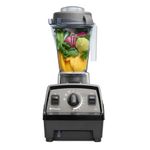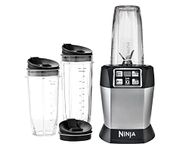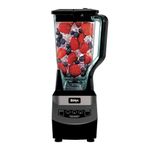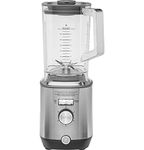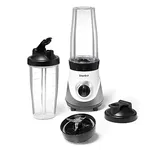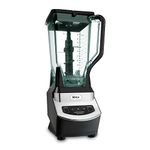10 bestBlendersof December 2025
112M consumers helped this year.
38% off
1
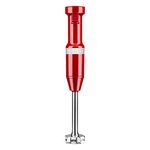
KitchenAid Variable Speed Corded Hand Blender, KHBV53ER
KitchenAid

9.9
2
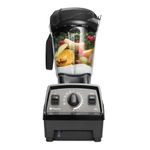
Vitamix Propel Series 750 Blender with Four Blending Programs, Self-Cleaning Program, Professional-Grade Blender for Smoothies, Soups and More, Stainless-Steel Blades, 2.0L Container, Black
Vitamix

9.8
3

Ninja BL660C Professional Countertop Blender With 1100-Watt Base,72Oz Total Crushing Pitcher and(2)16 Oz Cups For Frozen Drinksand Smoothies,Silver/Gray,1100W,(Canadian Version)Silver/Grey,7.8 Pounds
Ninja

9.8
24% off
4

Vitamix 5200 Blender, Professional-Grade Blender for Smoothies, Soups, Ice Cream and More, Stainless-Steel Blades, Self-Cleaning Kitchen Appliance, 2.0L Container, White
Vitamix

9.7
31% off
5
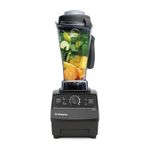
Vitamix 001372 Blender Professional-Grade Container, Self-Cleaning 64 oz, Black
Vitamix

9.6
OtherUp to 31% off
20% off
6
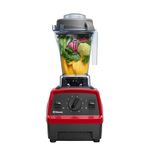
Vitamix E310 Explorian Blender, Professional-Grade, 48 oz. Container, Red
Vitamix

9.5
15% off
7
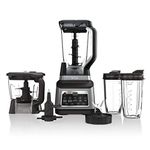
Ninja BN801C, Professional Plus Kitchen System With Auto-iQ, 72oz Pitcher, Black/Silver, 1400W (Canadian Version)
Ninja

9.3
8

Ninja BL450C, Nutri Pro Personal Blender For Juices, Shakes & Smoothies, 18 and 24 Oz cups, Black/Silver, 900W (Canadian Version)
Ninja

9.1
9
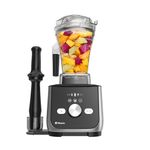
Vitamix Ascent X5 Blender with 10 Blending Programs, Self-Cleaning Program, Professional-Grade Blender for Smoothies, Soups and More, Stainless-Steel Blades, 1.4 L Container, Brushed Stainless
Vitamix

8.9
10
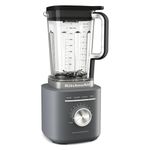
KitchenAid® Pure Power Blender KSB2072DG - Matte Charcoal Grey
KitchenAid

8.7
A Guide to Selecting the Best Blenders
Choosing the right blender can make a big difference in your kitchen, whether you want to make smoothies, soups, sauces, or even crush ice. The best blender for you depends on what you plan to use it for most often. By understanding the key features and how they relate to your needs, you can find a blender that will serve you well and last a long time.
Power (Wattage)
Power, measured in watts, tells you how strong the blender's motor is. This is important because a more powerful motor can handle tougher ingredients like ice, frozen fruit, or fibrous vegetables. Blenders with lower wattage (around 300-500 watts) are good for simple tasks like making milkshakes or blending soft fruits. Medium power (500-900 watts) can handle smoothies and some ice crushing. High power (over 900 watts) is best for heavy-duty tasks like making nut butters, crushing lots of ice, or blending tough greens. Think about what you want to blend most often—if you mostly make smoothies with soft fruits, you don't need the highest power, but if you want to make nut butters or crush ice regularly, go for a higher wattage.
Capacity
Capacity refers to how much the blender jar can hold, usually measured in liters or cups. This matters because it determines how much you can make at once. Small blenders (under 1 liter or about 4 cups) are great for single servings or small kitchens. Medium sizes (1-1.5 liters or 4-6 cups) are good for couples or small families. Large blenders (over 1.5 liters or 6 cups) are best if you often make big batches or entertain guests. Choose a size that matches how much you usually want to blend at one time.
Blade Material and Design
The blades are what do the actual blending, so their material and shape matter. Most good blenders use stainless steel blades, which are strong and resist rust. Some blades are designed for chopping, others for pureeing or crushing ice. If you want to do a variety of tasks, look for a blender with multi-purpose blades. If you mostly want to crush ice or make smoothies, make sure the blades are strong and sharp enough for those jobs. The right blade design helps you get smoother results and makes the blender more versatile.
Speed Settings and Controls
Speed settings let you control how fast the blades spin. Some blenders have just one or two speeds, while others offer multiple speeds and even special functions like pulse or pre-programmed settings. More speed options give you better control over texture, which is useful if you want to make both chunky salsas and smooth purees. If you like simplicity, a basic blender with a few speeds may be enough. If you want more control or plan to use your blender for many different recipes, look for more speed settings and features.
Jar Material
Blender jars are usually made from glass, plastic, or sometimes stainless steel. Glass jars are sturdy and don't absorb odors or stains, but they can be heavy and breakable. Plastic jars are lighter and less likely to break, but they can scratch or absorb smells over time. Stainless steel jars are very durable and keep contents cool, but you can't see inside while blending. Think about what matters more to you—durability, weight, or being able to see your ingredients—when choosing the jar material.
Ease of Cleaning
Cleaning your blender should be easy, especially if you use it often. Some blenders have removable blades and dishwasher-safe parts, which make cleaning much simpler. Others require more effort to clean by hand. If you want to save time and hassle, look for a blender with parts that are easy to take apart and clean, and check if they are dishwasher safe. This is especially important if you plan to use your blender daily.
Best Reviews Guide Newsletter
Get exclusive articles, recommendations, shopping tips, and sales alerts
Sign up for our newsletter to receive weekly recommendations about seasonal and trendy products
Thank you for subscribing!
By submitting your email address you agree to our Terms and Conditions and Privacy Policy
